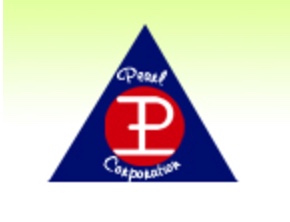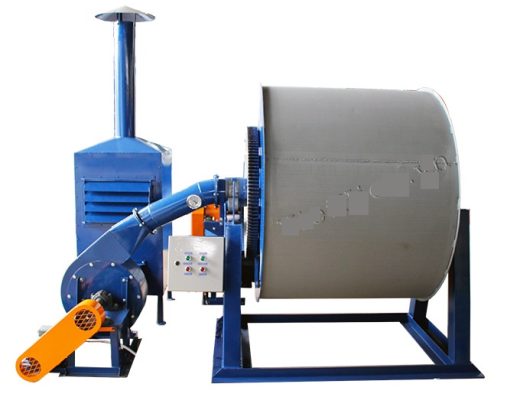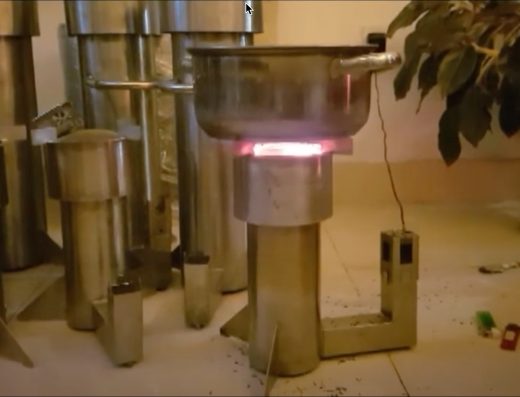Vietnam – International ESG & Sustainability Alliance
- New Condition
- +84979204338 Phone
- inquiry@esg.edu.vn Email
PART I : INTRODUCTION
- The urgency to invest
In recent years, the demand for sustainable and eco-friendly alternatives has been on the rise. One such alternative that has gained significant attention is bamboo. As a versatile and renewable resource, bamboo offers numerous environmental, social, and economic benefits. The urgency to invest in bamboo plantations stems from the pressing need to address climate change, deforestation, and the growing global demand for eco-conscious products.
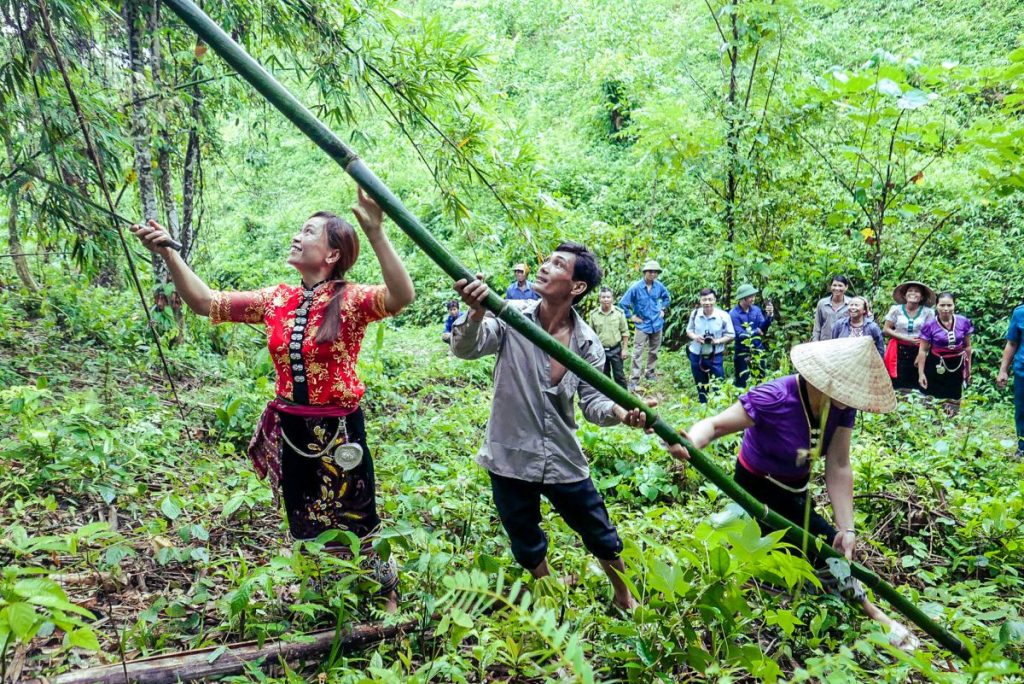
- Project investment purpose
The purpose of our project is to establish a bamboo plantation in Vietnam, capitalizing on the country’s favourable climate and rich agricultural heritage. By investing in this project, the aim is to harness the potential of bamboo as a sustainable resource, promoting reforestation efforts, creating employment opportunities, and contributing to the local economy.
- Nutritional and commercial value of bamboo
Bamboo, often celebrated for its versatility and sustainability, offers more than just structural support and aesthetic appeal. This chapter explores the nutritional and commercial value of bamboo, shedding light on its lesser-known benefits and the potential it holds in various industries.
Nutritional Value:
While primarily known for its industrial applications, bamboo also possesses nutritional qualities that make it an intriguing addition to the culinary world. Young bamboo shoots, harvested before they mature into woody culms, are the most commonly consumed part. These tender shoots are not only low in calories but also provide an array of essential nutrients. They are a rich source of dietary fiber, vitamins (such as vitamin A, vitamin E, and vitamin B6), and minerals (including potassium, calcium, and manganese). Additionally, bamboo shoots contain notable amounts of protein and antioxidants, which contribute to overall health and well-being.
Culinary Applications:
The nutritional composition of bamboo shoots, coupled with their mild and slightly sweet flavor, makes them a versatile ingredient in various cuisines. In Asian cuisine, bamboo shoots are often used in stir-fries, soups, salads, and curries, adding a delightful crunch and unique taste to the dishes. Their ability to absorb flavors from other ingredients makes them a popular choice among chefs seeking to elevate the taste profiles of their creations. Furthermore, bamboo shoot products, such as pickles and canned shoots, have gained popularity due to their convenience and extended shelf life.
Commercial Value:
Beyond its nutritional merits, bamboo holds immense commercial potential across multiple industries. The following are a few notable examples:
- Construction and Furniture: Bamboo’s strength, flexibility, and sustainability make it an ideal material for construction and furniture manufacturing. It is used to create flooring, paneling, scaffolding, furniture, and decorative items. Its aesthetic appeal, coupled with its eco-friendly attributes, has led to increased demand for bamboo-based products in the global market.
- Textiles and Fibers: Bamboo fibers have gained recognition in the textile industry for their softness, breathability, and antimicrobial properties. These fibers are used to produce a range of textiles, including clothing, towels, bed sheets, and even eco-friendly diapers. Bamboo textiles are valued for their comfort, durability, and eco-conscious appeal.
- Paper and Packaging: Bamboo pulp is an alternative source for paper production, offering a sustainable and renewable solution. Its fast growth rate, high yield, and low environmental impact make it an attractive choice for paper and packaging industries striving for sustainability.
- Energy and Biofuels: Bamboo’s rapid growth and high biomass production make it a promising source of renewable energy and biofuels. The plant’s ability to sequester carbon dioxide and its potential for generating biogas, bioethanol, and biochar contribute to its significance in the quest for clean and sustainable energy solutions.
- Bamboo market share in the world and Vietnam
Bamboo holds a significant market share globally, with increasing demand for its diverse applications. According to a report by Grand View Research, the global bamboo market was valued at USD 59.30 billion in 2021 [1]. It is projected to grow at a compound annual growth rate (CAGR) of 4.5% from 2022 to 2030. The report from Future Market Insights (FMI) estimates a higher CAGR of 6.1% for the bamboo products market during the period of 2022-2032 [2]. The report also suggests that the global bamboo products market is expected to be worth US$ 12.4 billion by the year 2032 [2].
Vietnam, in particular, has favourable conditions for bamboo cultivation and has emerged as a key player in the industry. The country possesses an ideal climate and abundant land resources, making it suitable for bamboo cultivation. Vietnam has the potential to become a major supplier of bamboo products, catering to both domestic and international markets [1].
Investing in a bamboo plantation in Vietnam presents an opportunity to tap into the growing market. With the increasing demand for sustainable and eco-friendly products, bamboo, known for its fast growth and versatility, offers a competitive advantage. By capitalizing on Vietnam’s favourable conditions and the rising global demand for bamboo, businesses can benefit from the country’s competitive advantage in the bamboo industry.
Sources:
[1] Global Bamboos Market Size & Share Report, 2022-2030 – Grand View Research. Retrieved from https://www.grandviewresearch.com/industry-analysis/bamboos-market
[2] Bamboo Products Market to Be Worth US$ 12.4 Billion by The Year 2032 – Comprehensive Research Report by FMI. Retrieved from https://www.globenewswire.com/news-release/2022/03/17/2405390/0/en/Bamboo-Products-Market-to-Be-Worth-US-12-4-Billion-by-The-Year-2032-Comprehensive-Research-Report-by-FMI.html
PART II: CURRENT PROJECT CONDITIONS
1. The origin of bamboo in Vietnam
Introduction:
Bamboo, an iconic plant known for its versatility and resilience, has deep roots in Vietnam’s history and culture. This humble plant, belonging to the grass family, has played a vital role in the lives of Vietnamese people for centuries. Let us explore the origin of bamboo in Vietnam, tracing its journey and significance in this beautiful Southeast Asian nation.
Historical Background:
Bamboo’s presence in Vietnam can be traced back thousands of years. The exact origin of bamboo in Vietnam is believed to be intertwined with the country’s rich agricultural heritage and its geographical location in Southeast Asia. Ancient Vietnamese civilizations recognized the numerous practical applications of bamboo and integrated it into their daily lives.
Ecological Adaptation:
Vietnam’s diverse geography, featuring a mix of mountains, plains, and a vast coastline, offers an ideal habitat for bamboo. The plant exhibits remarkable adaptability, growing in a range of climates and soil conditions. From the northern mountainous regions to the fertile Mekong Delta in the south, bamboo thrives throughout the country.
Cultural Significance:
Bamboo holds a special place in Vietnamese culture, representing resilience, strength, and simplicity. Its presence can be seen in various aspects of Vietnamese life, from traditional crafts and construction to cuisine and artistic expression. The Vietnamese people have ingeniously utilized bamboo in creating household items, musical instruments, tools, and even entire homes.
Bamboo in Traditional Crafts:
Vietnam’s rich tradition of bamboo craftsmanship has been passed down through generations. Skilled artisans transform bamboo into intricate products such as baskets, furniture, hats, and lanterns. The meticulous weaving techniques used in these crafts highlight the resourcefulness and artistry of the Vietnamese people.
Bamboo in Construction:
Vietnam’s architecture showcases the ingenious use of bamboo. Traditional stilt houses in rural areas often incorporate bamboo as a primary building material, allowing for natural ventilation and withstanding the region’s tropical climate. Bamboo’s strength and flexibility have also made it an essential component in the construction of bridges, scaffolding, and fishing traps.
Bamboo in Cuisine:
Bamboo has left its mark on Vietnamese cuisine, contributing to a wide range of traditional dishes. From bamboo shoots used in stir-fries and soups to bamboo leaves used for wrapping delicacies such as banh chung (sticky rice cakes), this versatile plant adds distinct flavors and textures to Vietnamese gastronomy.
Environmental Benefits:
Beyond its cultural significance, bamboo plays a crucial ecological role in Vietnam. As a fast-growing plant, it helps prevent soil erosion, promotes biodiversity, and acts as a natural carbon sink. Bamboo forests also contribute to watershed management, controlling water flow and reducing the risk of flooding.
2. Bamboo varieties are grown on the company’s farm
The bamboo species «Tre Luong » was selected for the plantation, a species reportedly most suitable for local conditions. This selection was supported by vast Tre Luong forests presently covering large areas nearby. Planting of seedlings was carried out in October and November 2020. Planting included removal of weeds, fertilising, and watering. 330 stems were planted per hectare, hence about 990 in total, with approximately 5 to 6 meters to each other.
The selection of the bamboo species Tre Luong for planting in the plantation offers several advantages compared to other bamboo species. Tre Luong, also known as Bambusa laccadensis or Bambusa nutans, is a prominent bamboo species known for its unique characteristics and benefits. Let’s explore its advantages in comparison to other bamboo species:
- Size and Growth: Tre Luong is recognized for its impressive size and rapid growth. It can reach heights of up to 25 meters (82 feet) and has a thick culm diameter, making it one of the larger bamboo species. Its vigorous growth rate enables quick establishment and development of a dense bamboo forest, providing excellent coverage and privacy.
- Culm Strength: The culms of Tre Luong are known for their exceptional strength and durability. This attribute makes it suitable for various applications, including construction, furniture making, and handicrafts. The sturdy culms can withstand heavy loads and adverse weather conditions, ensuring long-lasting and reliable structures.
- Aesthetics: Tre Luong exhibits a visually appealing appearance that adds to its value. The culms of this species feature a striking green coloration with subtle yellow stripes, creating an attractive and distinctive look. The elegant and ornamental nature of Tre Luong makes it a desirable choice for landscaping and decorative purposes.
- Versatility: Tre Luong offers versatility in its utilization. The culms can be employed in diverse applications, such as bamboo poles for construction, furniture production, and handicrafts. The shoots of Tre Luong are also edible and are utilized in various culinary preparations, expanding its usability beyond the typical bamboo applications.
- Adaptability: Tre Luong demonstrates adaptability to different soil types and climatic conditions. It can thrive in a range of environments, including tropical and subtropical regions. This adaptability allows for successful cultivation in various geographical areas, increasing its potential for widespread plantation establishment.
- Sustainability: Like other bamboo species, Tre Luong is renowned for its sustainability and eco-friendliness. Bamboo is a renewable resource with a rapid growth rate, allowing for frequent harvests without depleting the plant population. The cultivation of Tre Luong contributes to sustainable forestry practices, carbon sequestration, and soil erosion prevention.
- Economic Value: Tre Luong holds significant economic value due to its multiple applications. The bamboo industry offers opportunities for income generation through the production of bamboo-based products, including construction materials, furniture, textiles, paper, and handicrafts. The commercial potential of Tre Luong makes it an attractive choice for plantation establishment, benefiting local economies.
PART III: BAMBOO PRODUCTS
Examples of bamboo products and their potential as investment opportunities:
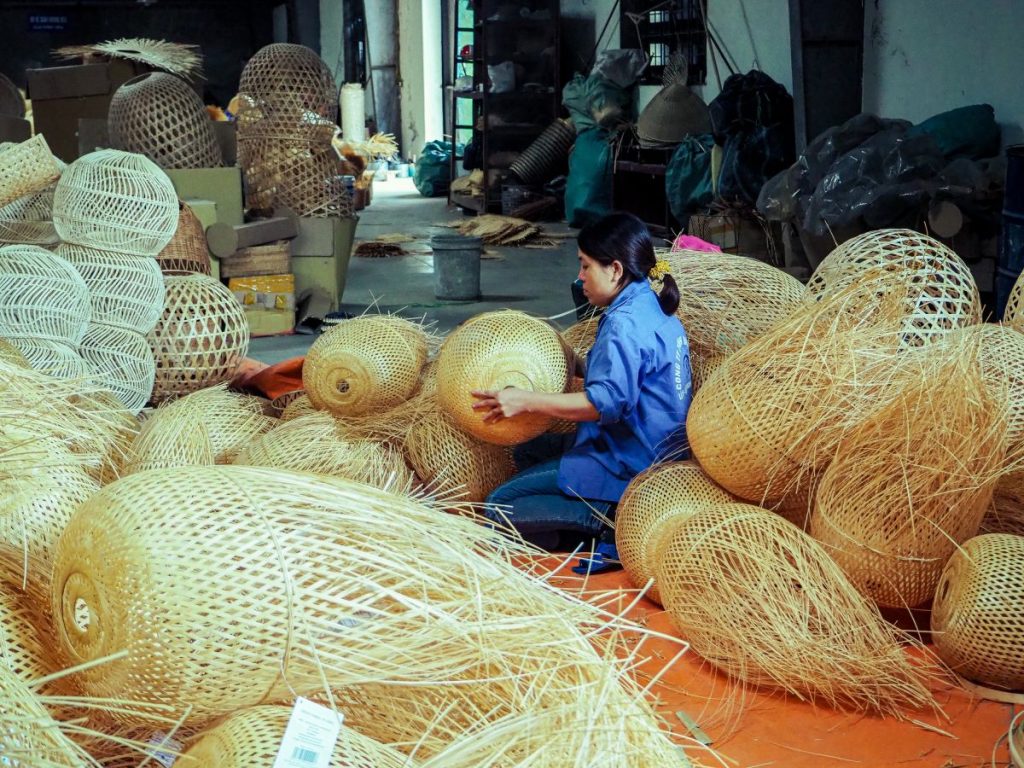
Bamboo Textiles and Apparel: Bamboo fibres can be used to create soft, breathable, and eco-friendly textiles that are increasingly sought after in the fashion industry. Bamboo clothing offers benefits such as moisture-wicking, temperature regulation, and natural antimicrobial properties. Investing in bamboo textiles and apparel can tap into the growing demand for sustainable fashion and contribute to reducing the environmental impact of the textile industry.
Bamboo Flooring and Building Materials: Bamboo has emerged as a popular alternative to traditional hardwood flooring and building materials due to its strength, durability, and sustainability. Bamboo flooring is highly resistant to moisture, pests, and wear, making it an attractive choice for both residential and commercial properties. Investing in bamboo flooring and building materials capitalizes on the increasing trend towards eco-friendly construction and offers long-term returns in the booming real estate and interior design sectors.
Bamboo Furniture: Bamboo furniture combines elegance, functionality, and environmental consciousness. Its natural beauty, strength, and lightweight nature make it a preferred choice for indoor and outdoor furniture. Bamboo furniture offers an opportunity for investment in the home decor and furniture market, where eco-friendly and sustainable products are gaining popularity among consumers who prioritize style and environmental responsibility.
Bamboo Kitchenware and Utensils: Bamboo kitchenware, including cutting boards, utensils, and storage containers, has gained traction as an eco-friendly alternative to plastic and traditional wooden products. Bamboo is naturally antibacterial, renewable, and easy to maintain, making it an ideal material for food preparation and storage. Investing in bamboo kitchenware presents an opportunity to cater to the growing demand for sustainable, health-conscious kitchen products.
Bamboo Charcoal and Activated Carbon: Bamboo can be processed into charcoal and activated carbon, which find applications in various industries. Bamboo charcoal is used for air and water filtration, odour absorption, soil improvement, and even skincare products. Investing in bamboo charcoal production can be lucrative due to its versatile usage across multiple sectors, including environmental remediation, water purification, and personal care.
Investing in bamboo products offers several advantages. Firstly, bamboo is a highly renewable resource, with rapid growth rates and minimal environmental impact compared to traditional timber. Secondly, bamboo products align with the increasing consumer demand for sustainable and eco-friendly alternatives, providing a competitive edge in the market. Additionally, bamboo’s versatility and broad range of applications present opportunities for diversification within the investment portfolio. Lastly, investing in bamboo contributes to environmental conservation, supports local communities, and fosters social responsibility, adding value beyond financial returns.
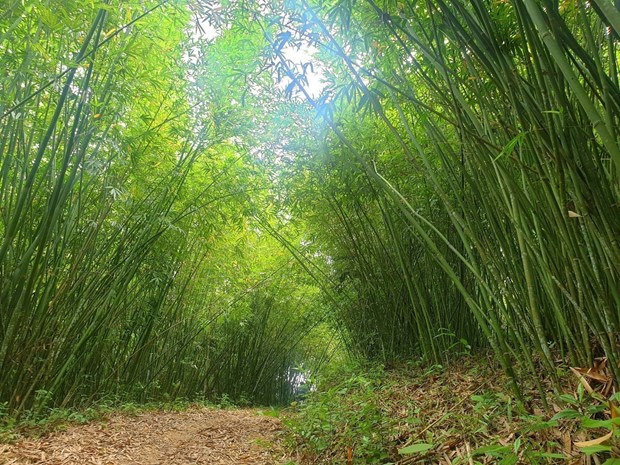
PART IV: FINANCIAL ANALYSIS OF INVESTMENT OF PLANT PROJECTS
1. Unit 1 hectare / 2. Unit 100 ha / 3. Unit 1000 ha
| Bamboo Plantation | 1 ha | 500 ha | 1000 ha | ||
| # | Investment costs | Total (VND) | Total (VND) | Total (VND) | Remarks |
| 1 | Land acquisition | VND – | VND – | VND – | Variable, depending on location |
| 2 | Supplies and bamboo seedling | VND 11,610,000.00 | VND 5,805,000,000.00 | VND 11,610,000,000.00 | incl. seeds and fertilizer |
| 3 | Site prepration | VND – | VND – | VND – | Variable, depending on location |
| 4 | Infrastructure | VND – | VND – | VND – | optional, like fences and roads |
| 5 | Labour | VND 23,250,000.00 | VND 11,625,000,000.00 | VND 23,250,000,000.00 | |
| 6 | Monitoring and Evaluation | VND 2,000,000.00 | VND 1,000,000,000.00 | VND 2,000,000,000.00 | |
| Total | VND 36,860,000.00 | VND 18,430,000,000.00 | VND 36,860,000,000.00 | ||
| # | Annual operation costs | Total (VND) | Total (VND) | Total (VND) | Remarks |
| 7 | Bamboo maintenance | VND 14,250,000.00 | VND 7,125,000,000.00 | VND 14,250,000,000.00 | incl. labour and fertilizer |
| 8 | Infrastructure Maintenance | VND 1,500,000.00 | VND 750,000,000.00 | VND 1,500,000,000.00 | |
| 9 | Monitoring and Evaluation | VND 2,000,000.00 | VND 1,000,000,000.00 | VND 2,000,000,000.00 | |
| Total | VND 17,750,000.00 | VND 8,875,000,000.00 | VND 17,750,000,000.00 | ||
| # | Annual Management Fees | Total (VND) | Total (VND) | Total (VND) | Remarks |
| 10 | Management fee | VND 3,000,000.00 | VND 1,125,000,000.00 | VND 1,500,000,000.00 | |
| Total | VND 3,000,000.00 | VND 1,125,000,000.00 | VND 1,500,000,000.00 |

